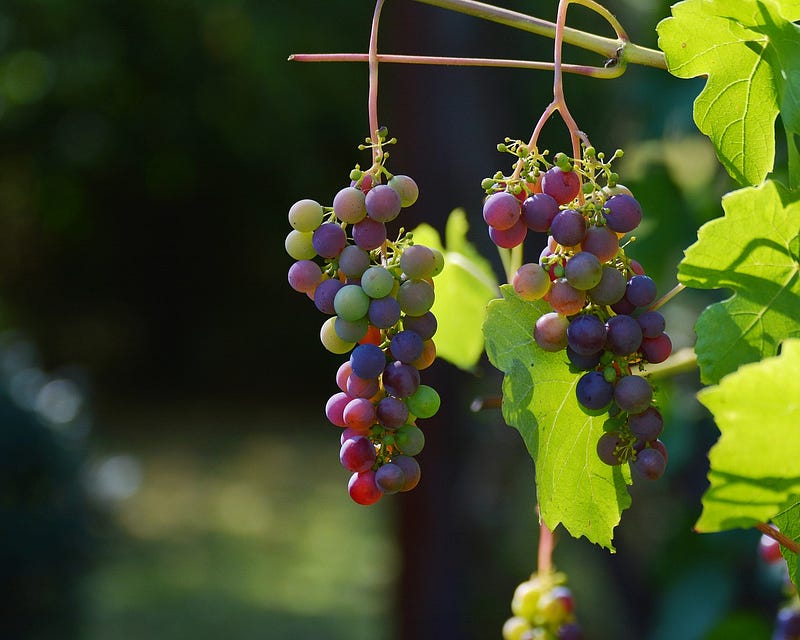The Impact of Climate Change on Wine Production and Quality
Written on
The Effects of Climate Change on Viticulture
Climate change is often recognized as one of the most significant challenges facing humanity today. While some individuals may not feel directly threatened by the rising sea levels, the increase in global temperatures carries a range of consequences. Among these are extreme weather events, such as floods, which can have catastrophic effects on agriculture, and droughts that directly impact food and crop yields.
Grapevines, specifically Vitis vinifera L., are among the most crucial crops affected by these changes. In 2018, the world produced an astonishing 292 million hectoliters of wine, equivalent to around 11,680 Olympic-sized swimming pools, cultivated over 7.4 million hectares, roughly the size of Italy itself. The climate plays a vital role in wine production, influencing not just the growth of the grapevines but also the flavor profiles of the wine produced.

Climate Change and Phenology
One primary way climate change affects wine production is through its impact on the phenology of grapevines. Phenology refers to the seasonal development stages of living organisms in relation to climatic conditions. For grapevines, this includes key phases such as budding, flowering, and ripening. Rising temperatures can accelerate these processes; for instance, a projected increase of 3-5°C (5.4–9°F) may lead to Pinot Noir grapes in France ripening 3-5 weeks earlier than in previous years. Furthermore, grapevines in northeastern Europe are expected to experience earlier budding and flowering.
As these stages begin sooner, the intervals between them become shorter, resulting in earlier harvesting dates—anticipated to be 7-10 days sooner in southern Italy.
Climate Change and Plant Growth
The second way climate change influences wine is through its effects on plant growth, which is significantly impacted by soil moisture levels. Adequate moisture is crucial during budding, while a decrease is necessary during flowering and ripening. The balance of rainfall and its seasonal distribution is essential; excessive moisture can lead to overgrowth, resulting in poor fruit quality, while insufficient moisture can produce smaller, more bitter grapes.
Moreover, climate change can also damage grapevines by causing cell death and chlorosis, potentially hindering future growth.

Climate Change and Product Quality
The impact of climate change on wine quality is another significant concern. As environmental conditions shift, the biochemical processes responsible for the development of taste and aroma compounds in wine are altered. For example, southern European wine regions are experiencing increased solar energy, soil dryness, and elevated temperatures, leading to grapes with lower berry weight and sugar content, as well as changes in aroma. The unpredictability of grape growth can also affect acidity, alcohol content, color, and flavor.
Regions like Croatia, with longer periods of temperatures above 30°C and more frequent droughts, may see increased sugar levels paired with decreased acidity, resulting in imbalanced wines. While some areas, like the Western Balkans, may initially experience increased productivity due to climate change, there is no guarantee that quality will remain constant.
Climate Change and Yield
The fourth impact of climate change on wine production concerns yield. The effects of climate change on grapevine yield vary significantly by region, influenced by several factors. Rising temperatures can lead to soil drying in already warm areas, negatively affecting yields. Conversely, cooler regions may see an initial productivity boost from warming, but prolonged heat can eventually hinder yields.
Additionally, dryness can restrict growth during the initial stages, while higher CO2 levels could mitigate some negative impacts by improving water and solar energy efficiency in grapevines.

Climate Change and Viticultural Areas
Finally, climate change poses a threat to the existence of viticultural areas. These regions, particularly those in warmer climates of southern Europe, may experience shifts in their geographical distribution due to changing conditions. Existing areas may expand northward, while others may become unsuitable for grape cultivation.
For instance, grape varieties in Italy that depend on specific growing conditions might need to be cultivated further north, while similar shifts are expected in Greece's wine-producing regions. New viticultural areas could emerge in currently cooler regions, such as higher altitude areas in northwestern Spain, Hungary, and Austria, potentially doubling the number of wine-producing regions in those countries. However, this shift also means that traditional viticultural areas may become unviable.
Conclusion
In summary, climate change impacts wine through its effects on grapevine phenology, growth, product quality, yield, and the viability of viticultural areas.
Actions We Can Take
To mitigate the impact of climate change, consider the following actions:
- Utilize videoconferencing instead of traveling.
- Opt for cycling holidays rather than flights.
- Prepare plant-based meals.
- Choose smaller cars over larger ones.
- Drive hybrid or electric vehicles instead of fossil fuel cars.
- Turn off the engine while waiting at railway crossings.
- Select renewable energy options from your energy provider.
What additional ideas do you have to combat climate change? Share your thoughts in the comments for collective inspiration.
Next Article
How Growing Alfalfa Contributes to a Sustainable Future.
You can explore more agriculture-related articles on my reading list.
Credit
This article draws from the works of: Droulia, F., & Charalampopoulos, I. (2021). Future Climate Change Impacts on European Viticulture: A Review on Recent Scientific Advances. Atmosphere, 12(4), 495. Santos, J. A. et al. (2020). A review of the potential climate change impacts and adaptation options for European viticulture. Applied Sciences, 10(9), 3092.
The first video titled Expensive vs. Value Wine - Can you taste the difference? explores the nuances between premium wines and more budget-friendly options, helping viewers discern the differences in taste and quality.
The second video titled The ESSENTIAL WINES - 15 bottles to build your collection! presents a curated list of must-have wines that every enthusiast should consider adding to their collection, providing valuable insights for wine lovers.